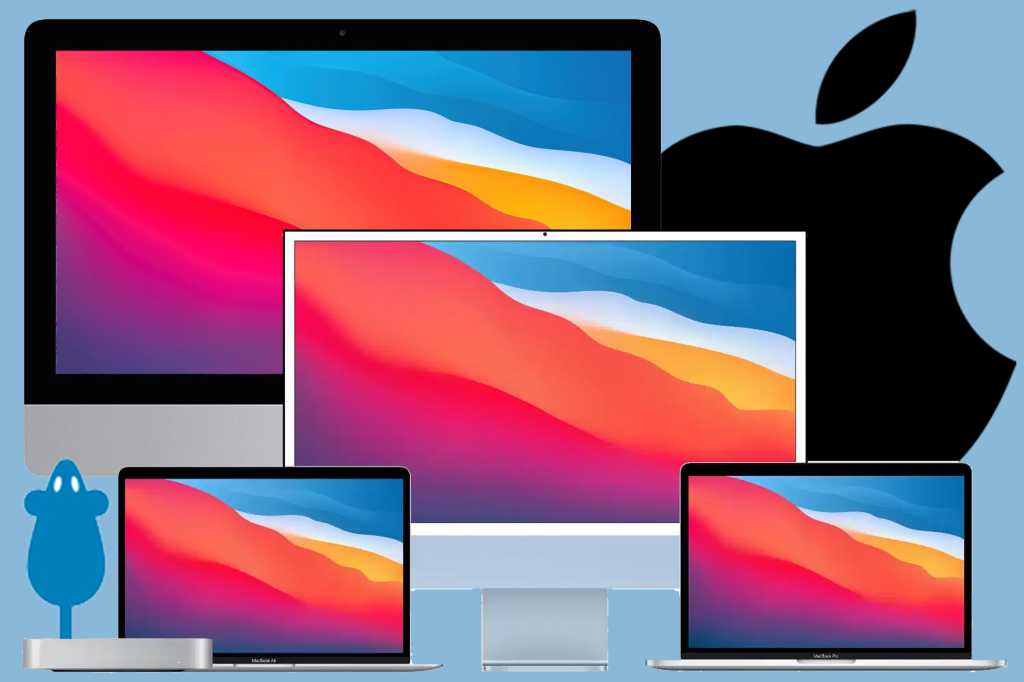What is it? The Mac Pro is Apple’s workstation. It’s designed for professionals who need a powerful and flexible machine. However, it’s not been updated since December 2019, which means it is still using Intel’s processors rather than Apple’s.
Who’s it for? The Mac Pro is designed for professionals who work with applications that use as many processing cores as possible—video-editing applications, image-editing software, 3D programs, audio editing, software developers, and the like.
How much does the Mac Pro cost? The Mac Pro starts at $5,999/£5,499 for a model with 3.5GHz 8‑core Intel Xeon W processor, 32GB RAM, Radeon Pro W5500X and 512GB SSD. There are many configurations available that can raise the price to around $50,000/£50,000.
What are the specifications? Apple doesn’t offer standard configurations of the Mac Pro. You start with a base model and custom configure it to your liking. Here’s an overview of the major specifications.
Processor: The Mac Pro uses Intel Xeon W processors. You can choose an 8- 12-, 16-, 24-, or 28-core CPU.
Memory: The Mac Pro uses DDR4 ECC memory, and has 12 DIMM slots. However, the memory configurations that Apple offers don’t always fill all of the slots. The amount of memory you can opt for starts at 32GB (four 8GB DIMMs) and goes all the way up to 768GB (six 128GB DIMMs or 12 64GB DIMMs). If you get a 24- or 28-core processor, you can get up to 1.5TB of memory, which fills all 12 DIMM slots.
Graphics: The Mac Pro has room for two graphics cards. Apple has three different AMD cards from which to choose: an 8GB AMD Radeon Pro 580X, a 32GB AMD Radeon Pro Vega II, or the 64GB AMD Radeon Pro Vega II Duo. Apple will be offering soon a 16GB Radeon Pro W5700X, and a 32GB Radeon Pro W5700X Duo.
Storage: The Mac Pro has room for two SSD modules. You can get a single 256GB SSD, or you can get 1TB, 2TB, or 4TB of storage that’s installed as a pair of SSDs. An 8TB storage option will be available soon.
Afterburner: Apple offers a special optional component with the Mac Pro called Afterburner. This is an accelerator card with a Field-programmable Gate Array (FPGA) designed for video production. According to Apple, Afterburner can handle up to six streams of 8K ProRes RAW video at 30 fps; up to 23 streams of 4K ProRes RAW video at 30 fps; and up to 16 streams of 4K ProRes 422 video at 30 fps.
How do I connect stuff? To connect external devices, the Mac Pro has two USB 3 ports and two Thunderbolt 3 ports on the back of the machine. The top of the Mac Pro has two Thunderbolt 3 ports.
Inside the Mac Pro, there are 8 PCI Express expansion slots. You can install up to two MPX modules, or up to four PCI Express cards. There is also three full-length PCI Express gen 3 slots (one x16 slot and two x8 slots).
Wi-Fi and Bluetooth come built-in on the new Mac Pro. The back of the machine also has two 10Gb ethernet jacks.
How fast is it? When it launched Apple said that the Mac Pro was “designed in pursuit of performance,” capable of handling 8K video editing, 3D applications, software development, and other production-oriented tasks.
Apple’s Mac Pro website shows only benchmarks for the highest-end 28-core model. They claim the new Mac Pro provides three times the performance in ProRes transcoding over the previous 12-core Mac Pro using Final Cut Pro X. Apple also says you’ll see more than triple the performance in tasks performed in Adobe Photoshop 2020, Autodesk Maya, Logic Pro X, MATLAB, and Wolfram Mathematica.
Since it launched Apple’s M-series SoCs have arrived, with the M1 Ultra, found in the Mac Studio (above) giving the Mac Pro a run for its money.
Macworld’s buying advice: The Mac Pro provides processing power that the most demanding users need. We’re talking about production environments, like TV and audio recording studios, animation houses, and software developers. If you feel like you can never have enough power, you’re probably the professional the Mac Pro is aimed at. If that sounds like you then we would still dissuade you from making a purchase until Apple introduces the new Mac Pro with an Apple-made SoC inside it.
If you’re more of a “prosumer” than a professional—someone who is an expert Mac user, but doesn’t use high-end apps—the Mac Pro is overkill. You’re probably not going to be able to take advantage of what the Mac Pro has to offer.

